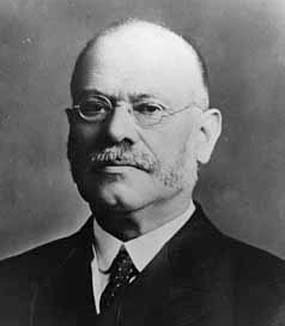
Benjamin Osgood Peirce
 المؤلف:
B O Peirce
المؤلف:
B O Peirce
 المصدر:
Mathematical and Physical Papers, 1903-1913
المصدر:
Mathematical and Physical Papers, 1903-1913
 الجزء والصفحة:
...
الجزء والصفحة:
...
 13-2-2017
13-2-2017
 1033
1033
Born: 11 February 1854 in Beverly, Massachusetts, USA
Died: 14 January 1914 in Cambridge, Massachusetts, USA

Benjamin Osgood Peirce's father, also named Benjamin Osgood Peirce, was a merchant. His (Benjamin Osgood II, the subject of this biography) mother was Mehitable Osgood Seccomb. Benjamin Osgood II attended school in Beverly, which is north of Boston, and after leaving he served an apprenticeship as a carpenter. He then entered Harvard College graduating with a degree in his main subject of physics in 1876.
Peirce was awarded a Parker Fellowship which allowed him to continue his studies in Europe. He reached Germany in 1877 and there undertook research which led to the award of a Ph.D. from the University of Leipzig in 1879. He then went to Berlin where he spent 1880 working with Helmholtz. He was particularly interested in studying properties of magnetism. Later in 1880 he returned to the United States where he was appointed to Boston Latin School. In the following year he was appointed as an Instructor in Mathematics at Harvard where he bult up the teaching of mathematical physics. Having now secured a permanent academic post, Peirce married Isamella Turnbull Landreth in 1882; they had two children.
In 1884 Peirce was promoted to Assistant Professor of Mathematics and Physics, working under Joseph Lovering who was Hollis Professor of Mathematics and Natural Philosophy at Harvard. Peirce was assisted in developing the teaching of mathematical physics at Harvard by his colleague William E Byerly. Together they taught calculus and its applications, constructing a two year course which Peirce and Byerly taught starting in alternate years. Each wrote a text based on half the material of the course but, given the structure of their course, it was natural that they contributed to both books. Byerly's text Elements of the integral calculus was first published in 1881, while Peirce's text Elements of the theory of the Newtonian potential function was first published in 1886. Both these texts continued to grow with further editions. As an indication of the cooperation of Peirce and Byerly on the two books, we note that Peirce published a table of integrals as a supplement to the edition which Byerly brought out in 1889.
Joseph Lovering retired in 1888 and Peirce was appointed to succeed him becoming Hollis Professor of Mathematics and Natural Philosophy. He was now an important figure in applied mathematics in the United States and he soon received recognition for his achievements. He was elected to the Council of the American Mathematical Society, serving from 1896 to 1898. He was a founder of the American Physical Society when it began in 1899 and was elected to the National Academy of Sciences (United States) in 1906. He was honoured with election to foreign academies such as the Mathematical Circle of Palermo and the Physical Society of France.
Bateman, writing in [2], says that Peirce was a:-
... master of the methods dealing with the partial differential equations of mathematical physics.
As to his personal qualities, one of his colleagues described him (see [4]) as having:-
... modesty so excessive as to almost cease to be a virtue.
Books:
- B O Peirce, Mathematical and Physical Papers, 1903-1913 (Harvard, 1926).
Articles:
- H Bateman, Review of 'Benjamin Osgood Peirce, Mathematical and Physical Papers, 1903-1913', Amer. Math. Monthly 35 (1928), 88-89.
- E H Hall, Biographical memoir of Benjamin Osgood Peirce, National Academy of Sciences, Biographical Memoirs 8 (1919), 437-466.
- A C Lewis, Benjamin Osgood Peirce II, American National Biography 17 (Oxford, 1999), 251-252.
- J Trowbridge, Benjamin Osgood Peirce, Harvard Graduates' Magazine 22 (March, 1914), 417-419.
 الاكثر قراءة في 1850to1859
الاكثر قراءة في 1850to1859
 اخر الاخبار
اخر الاخبار
اخبار العتبة العباسية المقدسة


